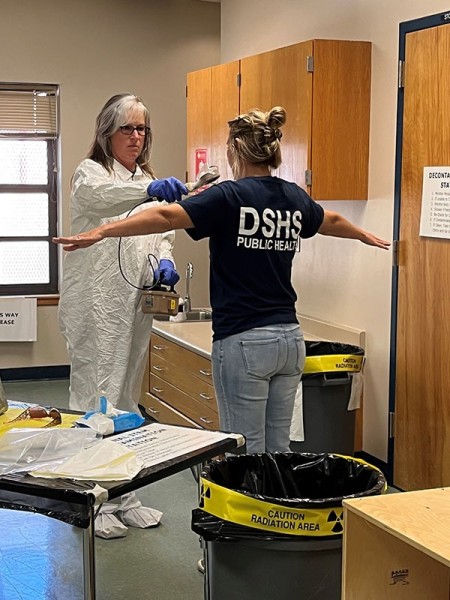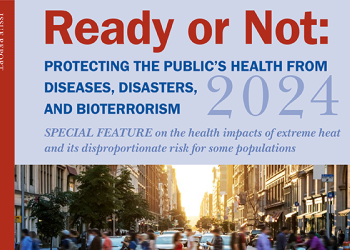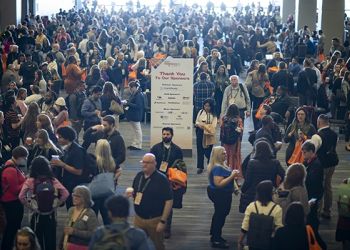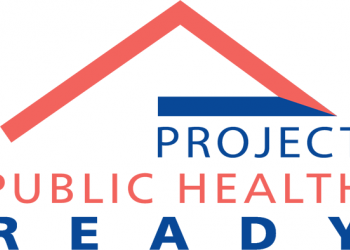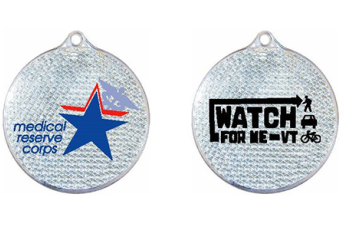Radiation emergencies can be intentional acts like terrorist attacks, or they can be accidents that occur when using radioactive material. A nuclear power plant accident, nuclear explosion, or a dirty bomb are examples of radiation emergencies. These can also be combined with conventional emergencies (a fire or a release of chemical substances), natural disasters, and/or military conflicts.
Public health professionals play an important role in any radiation emergency. Key responsibilities include but are not limited to conducting population monitoring, initiating health surveillance and epidemiological investigations, ensuring safe shelter operations, coordinating the distribution of medical counter measures, and providing protective action and other key messages for the public and other key audiences.
Radiation emergency responses are complicated; they require prompt actions that involve the cooperation of many agencies, and coordination of scarce resources and funding. It is crucial for public health professionals to engage with other response partners in planning, training, and exercising to mitigate a radio-nuclear hazard or its adverse consequences for human life, health, property, or the environment.
How a Local Community Prepares
Austin Public Health (TX) had not practiced radiation response but recognized the need for a regional planning and exercise effort. The team considered what would happen if a dirty bomb went off on a local base and, prior to COVID, began planning for an exercise. They picked up those plans again in the fall of 2021.
“The biggest challenge was that we had never talked about radiation,” said Ashley Hawes, Epidemiologist at the City of Austin. “Throughout the planning, we learned what radiation is.”
In preparation for an exercise, the staff at Austin Public Health completed CDC created radiation trainings, RadResponder, and CRC Simpler trainings. They also completed a hands-on training with Counterterrorism Operations Support (CTOS). In March of 2022, the group hosted a seminar for leadership and a planning workshop.
Toward the beginning of preparing, the team identified the need for a toolkit. They set about to coordinate an exercise that would help to educate themselves and provide an opportunity to practice the toolkit they would develop. They looked at a fire playbook and everything they had done through COVID-19 Points of Dispensing (PODs).
“We learned some important lesson during COVID,” said Hawes. “How to treat people, what personal protective equipment is necessary, how to address accessibility.”
Marlon Haygood, Emergency Plans Officer with Austin Public Health, took the lead in developing a toolkit and, early on saw an opportunity to collaborate with neighboring counties.
“We were already planning with local health department,” said Haygood. “Why not get together and collaborate?”
Haygood worked with colleagues at Williamson County and Cities Health District and Hays County Health Department over the next 2.5 months to develop the first version of a toolkit.
“Just getting together was helpful,” said Haygood.
Exercising with internal and external partners is key to help build preparedness for radiation emergencies by providing a low-risk, cost-effective environment. The Austin team also coordinated with the CDC. They talked about real world scenarios and learned about throughput calculations and bottlenecks. They considered doing a tabletop exercise but were looking for something more interactive.
Lauren Finklea, SimPLER Project Lead and User Support with CDC, listened to those concerns and developed “This is a T.E.S.T.”, a prototype collaborative role playing game. T.E.ST is a cooperative board game as both an instructional and exercise tool to help emergency responders and planners learn their roles and anticipate population needs within a collaborative and simulated environment.
In May, the team put its planning into practice through a five-day exercise, held Monday through Friday with a Community Reception Center (CRC) on Tuesday.
“Having the CRC early in the exercise allowed us to focus on ourselves, then use that data in the rest of the exercise,” said Hawes. “Being able to take it out of the timeline made it less stressful.”
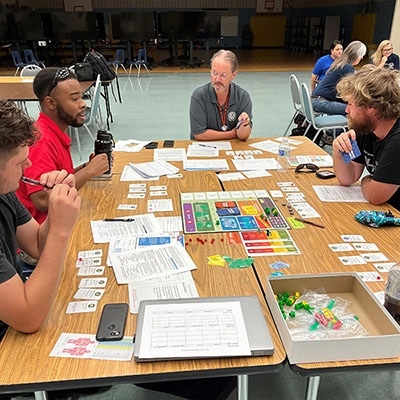
As part of the exercise, participants played “This is a T.E.S.T.” Roles in the game included public health, PIO, emergency management, radiation expert, and first responder. The game includes hazards like anxiety and fatigue cards.
“The game helped to stimulate conversation,” said Hawes. “It gave participants more of a baseline understanding of how response plays out. It was a fun, hands-on training.”
The team applied what it learned through the exercise to develop a version 2.0 of its toolkit. They hope to do a full-scale exercise in the future.
Resources for Local Planning:
